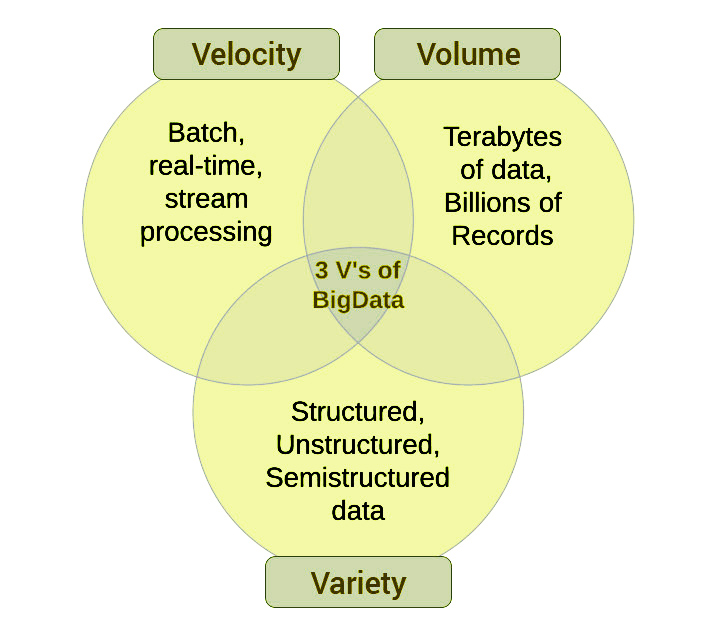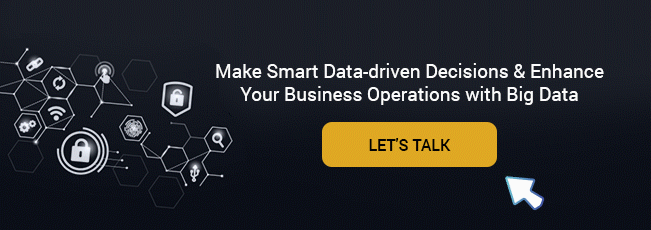Today, technological advances are gaining importance in users’ lives and the world of business, health, industry and the military. And one of the most promising technologies is IoT which allows physical objects to connect to the Internet and thus optimise their operation by generating data. However, in a world where data is king, it must be managed efficiently, and IT resources must be able to store an ever-increasing amount of data. So we can see how big data is gaining importance here.
So, in this blog, we will learn more about the powerful connection between IoT and big data solutions and how they can help optimise your organisation’s resources and expenses. Stay tuned to learn more.
The Internet of Things, or IoT, is a system of interconnected computing devices, mechanical and digital machines, objects, animals or people that have unique identifiers (UIDs) and which are able to transfer data over a network without the need for human interaction, human-computer interaction or human-computer interaction.
A thing on the Internet of Things could be a person with a heart monitor implant, a farm animal with a biochip transponder, a car with built-in sensors that warn the driver when tire pressure is low, or any other natural or man-made object to which an Internet Protocol (IP) address can be assigned and which can transmit data over a network.
Increasingly, organizations in various industries are using the IoT to work more efficiently, understand customers better, provide better customer service, improve decision-making, and increase business value. Each IoT has 5 common and inseparable components for its functionality (refer to the diagram given below).
The IoT is one of the greatest technological revolutions of our time, and its potential for exploitation is immense. IoT could have a huge impact on the cars of the future or on new versions of smart cities, an urban space connected to the Internet, greatly improving users’ lives and reducing their negative impact on the planet. As next, let’s take a close look at Big Data.
Big data refers to a massive amount of data that no traditional data management tool can handle. Thus, Big Data is a concept that allows access to huge databases in real-time.
The main objectives of big data are to improve the responsiveness of a company or system to a large amount of collected data, increase productivity and refine the knowledge of customer behaviour so that it can offer personalised offers or advertisements and create new trends.
Another fact we can’t afford to overlook is that the world’s data volume is increasing every second. Digital factories and large enterprises are generating data like never before. This has led to a significant increase in big data analytics solutions. From 2019 to 2022, revenue from global analytics solutions will grow 45% to $274 billion.
The data collected can take three forms:
It is structured, semi-structured and unstructured. You can extract data from all these data forms using various tools. So let’s take a brief look at them.
According to several studies, the use of IoT is expected to generate 41.6 Billion IoT Devices and 79.4 Zettabytes of Data in 2025. Also, this data needs to be read, mined and transmitted within certain time windows, so as you might have guessed, the big challenge in the IoT space is being able to mint huge amounts of data, hence the use of Big Data.
Big Data should allow for real-time analysis of the data generated by the IoT and thus optimise the use of this technology.
Big data works in four steps for this:
Big data will play an important role in the efficiency of information processing and allow IoT developers to optimise these tools to broaden the current perspective.
It’s not just that there is only interdependency between Big Data and IoT. Since they help each other, they also influence each other enormously. As the IoT grows, it will place more and more demands on businesses in terms of big data capabilities.
For example, while the data generated by the IoT is increasing enormously, traditional data storage technology is already reaching its limits. Therefore, more advanced and innovative storage solutions are required to handle these increasing workloads, which refreshes an organization’s big data storage infrastructure.
Likewise, combined IoT applications for big data accelerate the scope of research in both fields. Hence, IoT and big data both technologies are both interdependent and need to be further developed.
Also, today businesses use IoT devices to collect data. Since the data stored in IoT devices is unstructured, big data processes the collected data in real-time and stores it using various storage technologies. Therefore, it is very important to apply big data to IoT.
It will therefore be important to improve data storage technologies to develop systems capable of handling even more data. This interaction could thus allow technological growth in both areas simultaneously.
Big data is too complex and large and requires several tools and techniques to extract actionable information. Several big data tools on the market help store and process large data. Here is the list of the 10 best big data tools
The Big Data process can be applied to environments that generate large data sets as well as those that generate small data sets.
These tools have several key functions:
Big data analysis has become a trend in business intelligence in recent years. Therefore, some developers present it as a must-have solution. However, when choosing the big data analysis tools for the IoT enterprise, you must consider the company’s business objectives and the type and volume of data to store and analyse.
Big data analysis allows you to learn more about the processes taking place in the company and thus foresee unexpected situations.
This will help the business:
First, there are several ways to take advantage of IoT and big data: in some cases, a quick analysis is sufficient. At the same time, some valuable results are available only after deeper data processing. Let’s take a closer look.
Organisations can use big data collected from connected devices in real-time operations: measuring the temperature at home or in the office, tracking physical activities (counting steps, tracking movements) and more.
Also, the Healthcare sector uses real-time monitoring for many things (e.g., blood pressure, heart rate, and sugar). It is also successfully applied in manufacturing (to control production machines), agriculture (to control livestock and plants) and other industries—data analysis.
By processing the big data generated by the IoT, it is possible to go beyond monitoring and extract valuable insights from this data: identify patterns and trends, discover invisible patterns and find insights and correlations hidden.
Data from sensors provides additional context to uncover non-trivial performance-impacting issues and optimise processes.
1. Traffic Management: Track traffic loads at different dates and times to make traffic optimisation recommendations (e.g. increase the number of trains and buses at certain times, check profitability, advise on introducing new traffic light systems and build new roads on some roads less traffic and manage traffic jams).
2. Retail: If some products are almost sold out in a mall, supermarket staff will be notified, for example, to replenish the shelves with products.
3. Agriculture: Water plants when needed based on sensor data.
4. Predictive maintenance: The data collected by connected devices can be a reliable source for predicting risks and proactively identifying potentially dangerous conditions, for example: When a plane breaks down unexpectedly, it can cause delays, significant costs, or worse. Normally, aircraft maintenance is based on preventive maintenance, such as fixed inspection and repair schedules. However, predictive maintenance using sensors and flight data recorders can predict potential anomalies and schedule maintenance in advance.
5. Healthcare: monitor patients’ conditions and identify risks (e.g. which patients are at risk for diabetes or heart attack) to take timely measures.
6. Manufacturing: Predict equipment failures.
Not all IoT solutions require big data (for example, if a smart homeowner wants to turn off the lights using a cell phone, this can be done without big data). It’s important to reduce the overhead of processing dynamic data and avoid huge data stores that won’t be needed in the future.
It is important to realise that big data analytics and internet of things solutions are powerful tools on their own. They allow you to collect and process a greater volume of business data. But if the IoT and big data analytics are combined, they can produce amplified results. In addition to identifying vulnerabilities and increasing productivity, the Internet of Things reduces equipment maintenance costs. Also, here you can develop an in-depth business strategy by analysing large amounts of data as well. So, this detailed business strategy will allow your business to make more informed decisions.
In conclusion, Big Data analytics in the IoT enterprise is the way to the future. Businesses that use these technologies can effectively market their products, services, and client information. So, find a perfect IoT service provider and create the right strategy to reap the benefits of these incredible technologies right away. At this stage, assess the type of goals you want to achieve. And after that, align your strategies to make the most out of them.